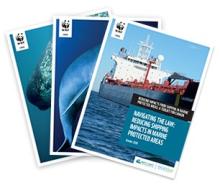
Canada's existing marine protections do not adequately consider or mitigate the impacts of shipping, leaving marine life to contend with a number of stressors, including underwater noise, ship strikes, and vessel discharges, even in areas designated as protected.
Together, WWF-Canada, West Coast Environmental Law and East Coast Environmental Law have produced a toolkit to share the impacts of shipping in marine protected areas (MPAs) and identify the tools that MPA practitioners and shipping experts can use to reduce those impacts in Canada.
There are two main reasons why most MPAs in Canada have not adequately addressed the risks posed by shipping. The first is that the science around shipping impacts on the marine environment is growing, and the second is that many practitioners require a better understanding of the complex legal and regulatory environment that exists for shipping in Canada.
To address these barriers, we have commissioned and conducted a number of reports which are included in this toolkit. From documenting the impacts of shipping on wildlife and habitats, to outlining the legal framework for shipping in MPAs and analyzing the opportunities for using existing legal tools to reduce impacts, to reviewing case studies on reducing shipping impacts in MPAs, the full reports and a quick reference guide are available in the toolkit below.
2 - Impacts of Shipping on Marine Birds
3 - Impacts of Shipping on Benthic Habitats
4 - Shipping through Sea Ice: Impacts on Marine Habitats and Best Practices
5 - Mitigating Shipping Impacts on Cetaceans in Canada: Lessons Learned and Best Practices
6 - Navigating the Law: Reducing Shipping Impacts in MPAs
7 - Shipping in MPAs Toolkit Workshop Summary Report
8 - Evaluating Tools for Monitoring and Compliance
9 - Reducing Impacts from Shipping in St. Anns Bank MPA: Atlantic Case Study